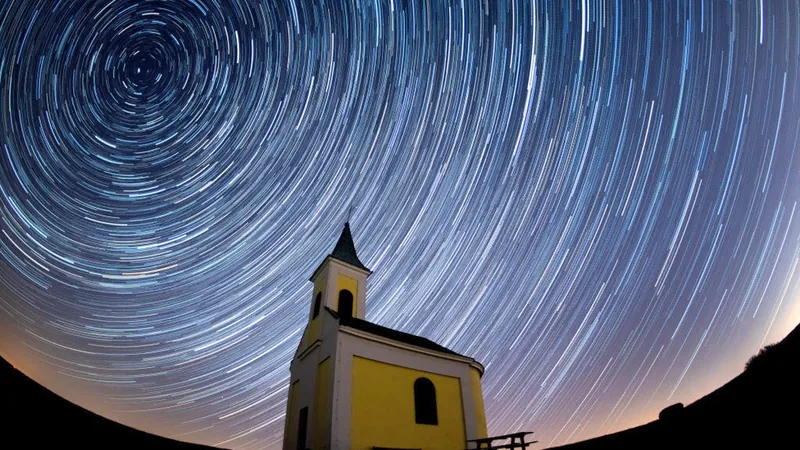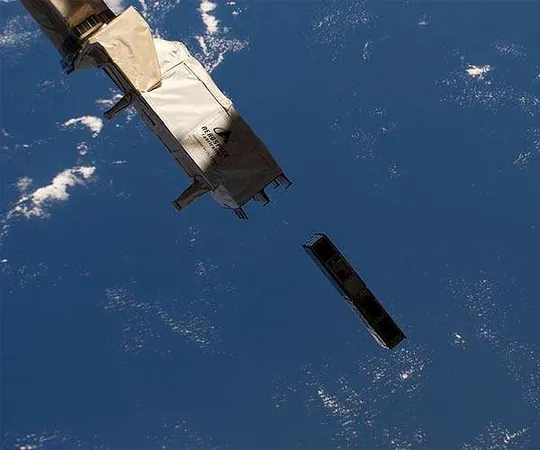
Get Ready for an Exciting Year of Meteor Showers in 2025: Key Dates and Viewing Tips!
2025-01-18
Author: Ming
As the calendar flips to 2025, skywatchers can look forward to a dazzling array of meteor showers lighting up the night sky throughout the year. With the right planning, you can make the most of these astronomical events and witness nature’s captivating display of shooting stars. Here’s your complete guide on when to watch and how to maximize your experience.
Best Tips for Meteor Shower Viewing
To increase your chances of witnessing the mesmerizing spectacle of meteors, follow these expert tips:
1. **Escape Light Pollution**: Venture into dark areas far from city lights; light pollution significantly diminishes visibility. Seek out parks or rural locations for optimal viewing.
2. **Find the Radiant**: Know the constellation from which the meteors will appear—the radiant point—and keep your gaze directed there. This will enhance your chances of seeing the most meteors.
3. **Moon Phases Matter**: Be mindful of the moon's brightness; it can overshadow faint meteors. Check ahead for moon phases to plan your observations on darker nights.
Meteor Showers to Watch for in 2025
#### **1. Quadrantids** - **When**: December 12, 2025 - January 12, 2026 - **Peak**: January 3-4, 2026 - **Rate**: Up to 120 meteors/hour - **Radiant**: The Big Dipper Start the year with a stunning show! The Quadrantids, known for their bright meteors, peak at the start of January, with up to 120 meteors per hour as Earth intersects the debris from asteroid 2003 EH.
#### **2. Gamma Normids** - **When**: February 25 - March 28 - **Peak**: March 14-15 - **Rate**: Up to 6 meteors/hour - **Radiant**: Norma Though not very exciting, the Gamma Normids offer a serene viewing experience, especially in southern regions where the radiant is visible.
#### **3. Lyrids** - **When**: April 15 - April 30 - **Peak**: April 21-22 - **Rate**: Up to 18 meteors/hour - **Radiant**: Lyra As one of the oldest recorded meteor showers, the Lyrids can surprise viewers with bright fireballs, making it a lovely display in the spring sky.
#### **4. Eta Aquariids** - **When**: April 20 - May 21 - **Peak**: May 3-4 - **Rate**: Up to 50 meteors/hour - **Radiant**: Aquarius Thanks to Halley's Comet, this colorful meteor shower promises a robust show, especially in the pre-dawn hours.
#### **5. Perseids** - **When**: July 17 - August 23 - **Peak**: August 12-13 - **Rate**: Up to 100 meteors/hour - **Radiant**: Perseus Regarded as one of the best meteor showers, the Perseids promise a thrilling summer night experience, although the nearly full moon might obstruct faint meteors.
#### **6. Geminids** - **When**: December 4 - December 20 - **Peak**: December 14-15 - **Rate**: Up to 120 meteors/hour - **Radiant**: Gemini Crowning the year, the Geminids are celebrated for their colorful and bright meteors, making them a must-see event as the year wraps up.
Unique Facts About Meteor Showers
Did you know that most meteor showers originate from comets? However, the Quadrantids are unique—while many showers are fueled by comets, this one derives from an asteroid! These captivating snippets of cosmic debris provide a great opportunity for both amateur and seasoned astronomers to connect with the universe.
Mark your calendars and prepare for a mesmerizing 2025 filled with celestial magic! With these tips and dates at your fingertips, you’ll have an unforgettable night of stargazing. Be sure to share your observations, and who knows—you might catch some amazing photographs or stories to share!



 Brasil (PT)
Brasil (PT)
 Canada (EN)
Canada (EN)
 Chile (ES)
Chile (ES)
 Česko (CS)
Česko (CS)
 대한민국 (KO)
대한민국 (KO)
 España (ES)
España (ES)
 France (FR)
France (FR)
 Hong Kong (EN)
Hong Kong (EN)
 Italia (IT)
Italia (IT)
 日本 (JA)
日本 (JA)
 Magyarország (HU)
Magyarország (HU)
 Norge (NO)
Norge (NO)
 Polska (PL)
Polska (PL)
 Schweiz (DE)
Schweiz (DE)
 Singapore (EN)
Singapore (EN)
 Sverige (SV)
Sverige (SV)
 Suomi (FI)
Suomi (FI)
 Türkiye (TR)
Türkiye (TR)